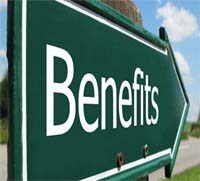4 common terms and features of new Buy to Rent loans:
- DSCR
There has never been a better time to expand income property DSCR or Debt-Service Coverage Ratio is a term commonly used in commercial real estate financing. It is effectively the same as the Debt-to-Income (DTI) ratios most investors are probably familiar with when buying residential homes and borrowing from local banks. In this scenario, commercial lenders use this expression to determine the DTI ratio of an individual or pool of properties to determine maximum new debt, based upon the income derived from the property being used as collateral. A DSCR of less than 1 would mean the property would be negative cash flow. The standard minimum DSCR required by lenders is traditionally 1.25.
- Non-Recourse
Non-recourse loans are prized by intelligent investors. It means individuals will not be pursued personally in case of default on a loan. The property would still be subject to foreclosure. It is now standard for lenders to add exceptions to this in cases of fraud or other actions of owners which may be deemed to have deliberately caused the default.
- Cross Collateralized
This new breed of loans provides extended rental home financing in one mortgage loan collateralized by multiple single-family rental homes. This can range anywhere from 5 units to thousands of units. This provides simplification and streamlined lending, reduced borrowing costs, maximized returns, and helps free up captive capital, and enables efficiency in making new acquisitions. For example; an investor with 10, $100,000 homes could theoretically leverage $700,000 in one 70% LTV loan by providing a first mortgage secured by these properties.
- Capital Expenditures Reserve Accounts
Some new lenders and loan programs establish Capital Expenditure Reserve Accounts on behalf of their clients. This has been a very controversial and misunderstood factor of loans to date. Reserves have long been a factor in credit approval, especially for commercial and investment properties. Lenders would rather loan more and see a borrower has a cash reserve to service debt in emergency situations. Experienced rental property investors also know that at some point during their stint as a landlord repair and replacement demands will arise. Appliances, siding and even roofs only have a finite lifespan. In order to keep properties performing these items need to be budgeted for, with some money put aside each month to bulk up for when these needs arise, without suffering cash shortages. This is definitely a sign of a lender dedicated to sustainable practices, and who also has the investor’s interest in mind.
Please visit our FAQ's Section for more details.


